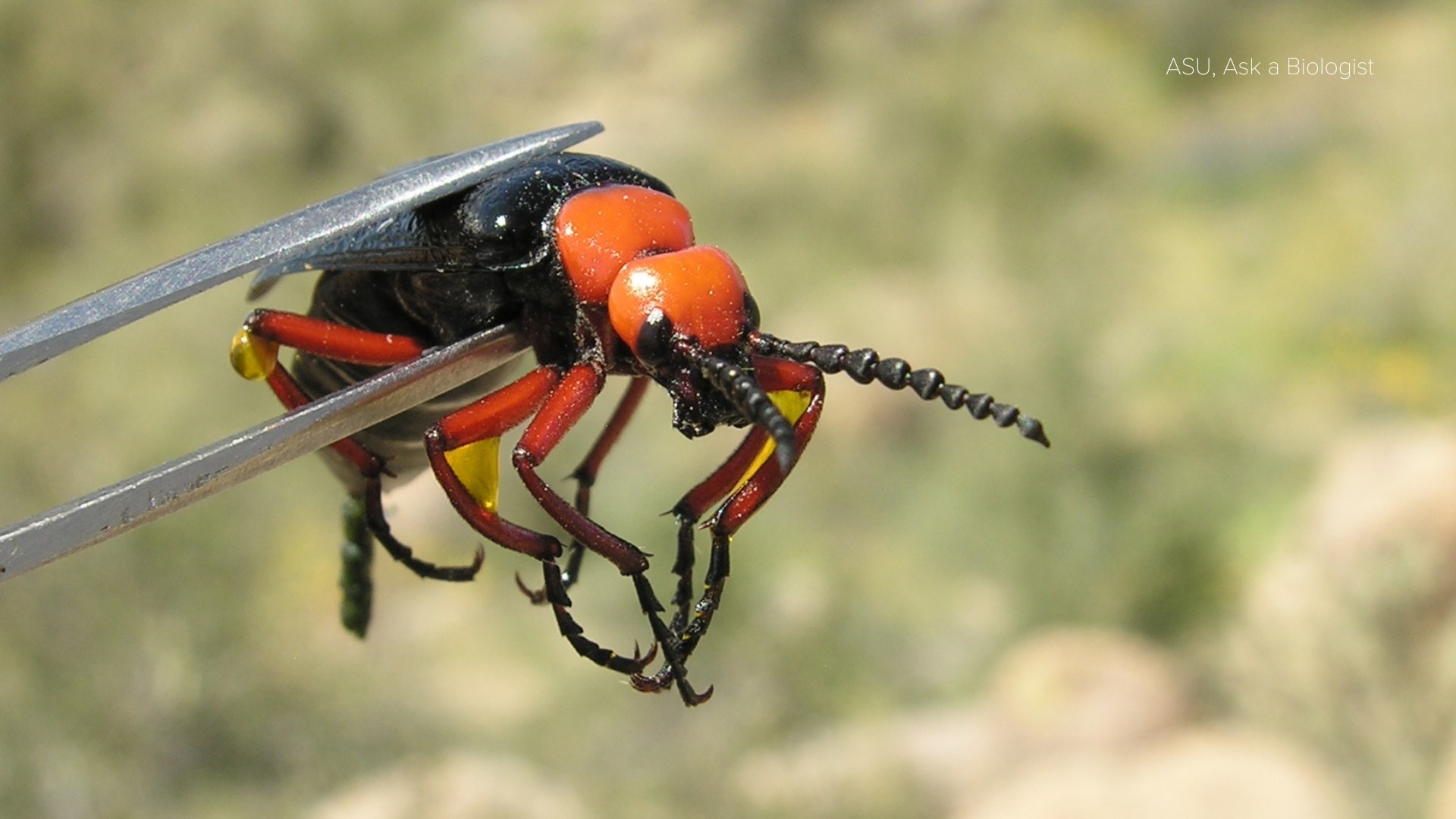PHOENIX — Sometimes Arizona feels like the Australia of the American Southwest. We've got venomous snakes, spike-covered plants, and, oh yeah, beetles that can burn your skin with their blood!
The good news is that the "master blister beetle," also known by its scientific name Lytta magister, is easy to spot when out on the trails.
VERSIÓN EN ESPAÑOL: 'Extremadamente tóxico': Lo que los excursionistas de Arizona deben saber sobre este gran escarabajo
This large black and red beetle stands out from the brittlebush and shrubbery that it likes to eat and live in during the spring. According to Arizona State University's Ask A Biologist blog, one bush can house as many as several dozen.
But if you see them out in the wild, definitely don't touch them.
Blister beetles get their name from their special defense mechanism; the ability to pop blood vessels in their legs, causing their yellowish blood to drip out.


That blood not only stinks and tastes foul to ward off predators, but it can also cause chemical burns to human skin and even poison animals that eat the beetle. It's full of the chemical cantharidin, which the National Oceanic and Atmospheric Administration (NOAA) classifies as a "super-toxic" substance.
What to do if you get burned
According to NOAA, contact with the blister beetle's blood can cause swelling and painful blisters within 24 hours.
If you do come into contact with one of these bugs, don't panic. The welts and blisters may hurt, but they're not life-threatening and they'll heal in about a week.
Healthline.com recommends you wash the area daily with warm soapy water and apply a topical steroid or antibiotic. A cold compress can also help to ease the swelling and pain. However, if the toxin gets in your eyes, you should seek medical attention.
You should also wash any clothing that comes into contact with blister beetles, as their blood can soak into the fabric.
Preventing burns
It's because of that toxic blood that the beetles can both grow so large and sport such bright colors. Predators know not to mess with these big bugs!
If you're going to be playing or hiking outside, be mindful of areas that may have blister beetles. Because of their size and coloration, they're easy to see, so just give them a wide berth.
If a blister beetle lands on you, you can gently remove it by blowing it off your skin. Once the beetle is gone, just rinse the area with water and you'll be fine.
So keep an eye out on the trails, and appreciate these beetles from a distance!
VERSIÓN EN ESPAÑOL: 'Extremadamente tóxico': Lo que los excursionistas de Arizona deben saber sobre este gran escarabajo
WE ❤ ARIZONA
Explore amAZing people, places and things across our state on our 12News YouTube playlist here.

